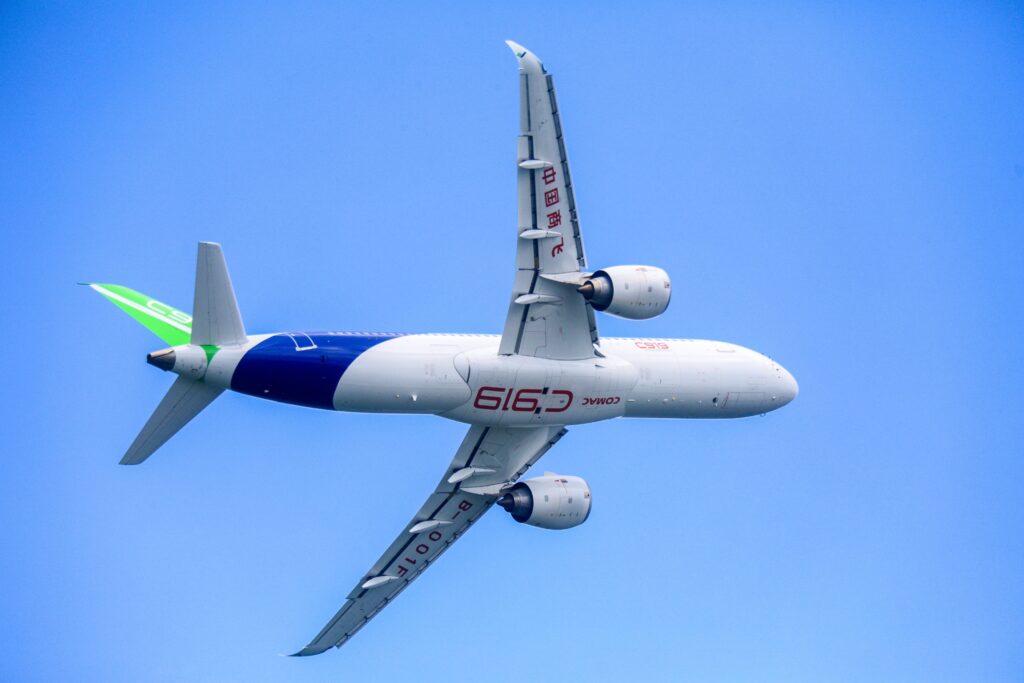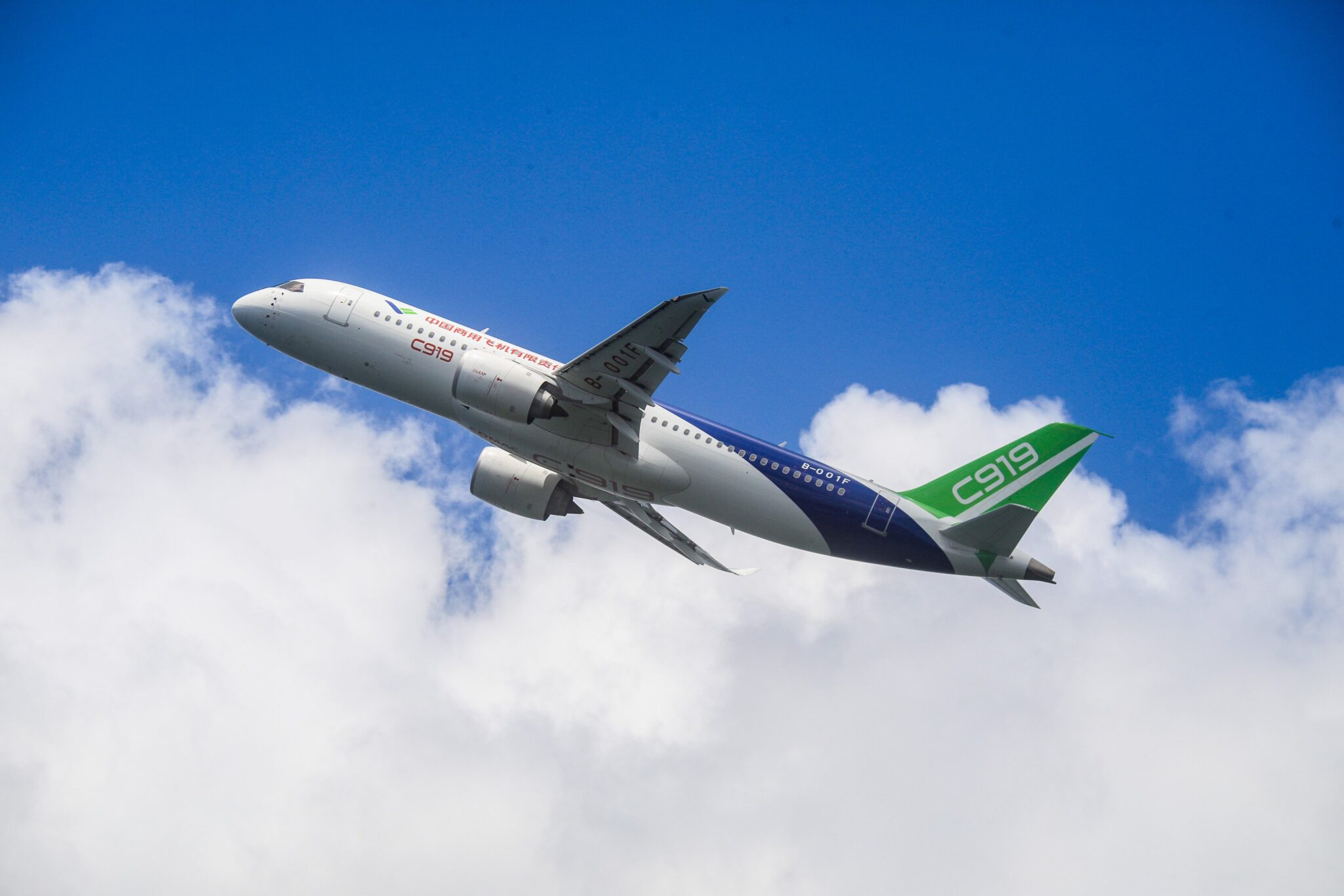Skift Take
China's state-owned plane maker is presenting the COMAC C919 on the international stage with high hopes of stealing market share from Airbus and Boeing.
Visitors to last week’s Singapore Airshow witnessed a landmark moment: the international debut of China’s C919 passenger jet.
Beijing is betting big that the new plane will shake up the dominance of Airbus and Boeing – but is it up to the challenge?
The C919 is an aircraft developed by COMAC, a state-owned firm founded in 2008 to develop passenger airliners. While its first product, the ARJ21, chalked up just 120 deliveries as of late 2023, there are higher hopes for the C919.
The plane made its first flight in 2017 after years of delays. At present, only the Civil Aviation Administration of China has certified the new jet to fly in passenger service. China Eastern Airlines started commercial operations with the C919 last year and currently has four in its fleet of more than 600 aircraft.
The C919 Goes International
Two units graced the biennial industry gathering in Singapore and COMAC is looking to garner international interest and potential orders.
The narrowbody jet is designed to compete with the Airbus A320 and Boeing 737, and represents China’s desire to challenge the dominance of COMAC’s two Western counterparts. It was no accident that COMAC used the airshow to announce Tibet Airlines’ firm order for 40 units.
Even so, the C919’s journey toward global acceptance is only just beginning. COMAC will soon be seeking approval from EASA, the European Aerospace regulator. Securing this and convincing international airlines of the aircraft’s performance will be key challenges.
Although China refers to the jet as “homegrown,” Chinese newspaper The Global Times has previously stated that at least 40% of the components of the aircraft are internationally sourced.
Take its engines as an example. These are supplied by Safran, the same company that powers many A320neo and 737 Max planes. Other international partnerships include joint ventures with Europe’s Liebherr-Aerospace for the landing gear, North Carolina-based Honeywell providing the flight control systems, and GE Aviation producing the plane’s flight deck displays. It truly is a global effort.
On board the C919
A bigger question remains: Is China’s new plane any good? Stepping on board the aircraft in Singapore, there’s a lot of familiarity with a Boeing 737 or Airbus A320.
The models delivered to China Eastern have been configured with eight business class seats in 2-2 configuration. These feature a cradle shell and a small privacy screen.
Further back, the 156 economy options are in the traditional 3-3 setup, however not all is what it seems. The C919 borrows a trick from the Airbus A220 (in service with JetBlue, Delta, and others) to offer an extra half-inch width to the middle seats.
The idea is that there will be less of a fight for shoulder room with neighboring passengers. All of the seats have been produced by a Chinese manufacturer.
From an operational perspective, the galleys feel large. Unlike newer Airbus and Boeing models, COMAC has kept the space in a more traditional format and has not been tempted to squeeze in a few extra seats.

Does the C919 Threaten Airbus and Boeing?
Narrowbodies are the bread and butter for the world’s two biggest plane manufacturers. Airbus and Boeing are firmly entrenched in the segment, with most production slots sold out until the end of the decade.
COMAC wants the C919 to compete in this arena, boasting better delivery times and pricing. The company currently has an orderbook of more than 1,000 planes, mainly from leasing firms and Chinese operators.
Although this sounds promising, the C919 still has a long way to go before non-Chinese airlines consider it as a credible alternative. Alongside regulatory hurdles, its flying range needs to be improved.
In its current form, the C919 jet can fly for a maximum of around 2,200 nautical miles for the base model. By comparison, both the A320neo and 737 Max 8 can fly up to 3,500nm.
Range is important in the airline business as it affords greater route flexibility. Production also needs to be ramped up, which could be a challenge as COMAC establishes its supply chain and processes.
Playing Plane Politics
Even if COMAC can win over airline executives and fine-tune its production, politics could hamper its near-term success. For example, Boeing’s 737 Max was grounded for an extended period in China after it returned to service in the rest of the world.
For now, it seems Boeing and Airbus are monitoring the project but do not appear overly worried. Christian Scherer, CEO of Airbus’ commercial aircraft business, said last week that the C919 is “not going to rock the boat.”
The Daily Newsletter
Our daily coverage of the global travel industry. Written by editors and analysts from across Skift’s brands.
Have a confidential tip for Skift? Get in touch
Tags: airbus, Boeing, china, china eastern airlines, COMAC, singapore airshow
